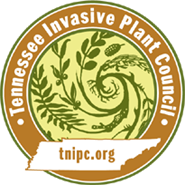TN-IPC Invasive Plant Lists
Tennessee Invasive Plant Council’s Invasive Plants of Tennessee list is divided into two sections based on the plants’ invasive tendencies.
Invasive Plant Species Natural Areas (see below)
Invasive Plant Species Disturbed Habitats
The Natural Areas listing concentrates on species more likely to invade and affect intact native plant and animal communities or hinder their restoration, posing threats to community integrity and function.
The Disturbed Habitats listing includes all other non-native invasive species that are problematic in less pristine settings, possessing invasive traits undesirable in both wild and managed landscapes.
The purpose of these lists is to identify introduced (exotic) plant species that are not native to Tennessee and are invasive or possess the characteristics to become invasive and cause damage to native plant communities. The intent is:
- to foster early detection of invasive exotics enabling resource managers to implement a rapid response action to prevent establishment and spread;
- educate the general public and resource managers in an effort to eliminate the use of invasive exotics in landscaping, restoration, and enhancement projects.
These lists have no regulatory authority but provide useful information to help guide agencies and private landowners in making responsible decisions about plant use and management. The Council acknowledges that most introduced species are harmless. However, it also realizes that many species do naturalize and have the potential to spread and become ecological disasters.
TN-IPC highly recommends avoidance of these listed species in plantings and their removal from landscapes where practical.
Nomenclature and authorship are taken from the Integrated Taxonomic Information System (ITIS)
Homeowners Invasive Plant Primer
Management suggestions for each listed species provide information on the most effective means of control. For homeowners and others working with residential properties who might need more preliminary guidance on the process of identification, control techniques, and post-treatment replanting, please consult TN-IPC’s “Invasive Plant Primer for the Home Landscape.”
Threat Level Definitions (Natural Areas List)
| Established Threat | Many species in this category are archetypal invasive weeds known by every land manager, but all are widely established across Tennessee. All taxa assigned to this category have been reported from more than 10 counties. These taxa cannot be eradicated on a landscape scale using methods currently available, but officially designating the plants as invasive may serve to educate the general public and give land managers support to eradicate the species where appropriate (i.e. high quality natural areas, in tandem with rare species management, part of public engagement/citizen science projects, etc.). In addition, designating the species as a threat may push industry and state/federal agencies toward less invasive alternatives in landscaping and revegetation, thereby helping to avoid the next serious exotic plant escape. |
| Emerging Threat | Species in this category have been previously reported from less than 10 counties in Tennessee, but are known to invade and disrupt natural plant communities in adjacent states. Theoretically, the early detection/rapid response model could be used to eliminate infestations or reduce the spread of these species in Tennessee. In addition, the act of listing these plants, many of which are relatively obscure in Tennessee, will help the land managers and the general public to recognize these species in the field. |
Individual Plant Data (Natural Areas List)
Download the Invasive Plant Excel-CSV FileClick the plant within the table to access its full description, images, life history, similar species, and various management recommendations.
Sorting Criteria
Category |
All Aquatic Forb/Herb Grass Shrub Tree Vine |
Threat Level |
Both Emerging Established |
